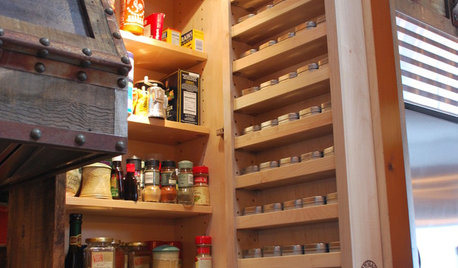Since everyone 'hates' scotts 4 step online, what's preferred?
ls3c6
12 years ago
Related Stories

DECORATING GUIDESDiscover the Rug Type Everyone Wants
You can clean them quickly. They come in every color and pattern imaginable. You can score one cheap. Say hello to flat-weave rugs
Full Story
GREAT HOME PROJECTSHate Hauling Laundry? Give Dirty Clothes the Chute
New project for a new year: Install a quick route to the laundry room
Full Story
FURNITUREWhy It's OK to Hate Your New Custom Sofa
It takes time to get used to bold new furniture, but dry your tears — the shock can be good for you. Here's what to expect
Full Story
DECORATING GUIDESAnimal Prints: A Love-It-or-Hate-It Look
Some embrace faux furs and animal-print upholstery as classic looks. Others see them as a tacky throwback
Full Story
DECORATING GUIDESIs an Online Decorator Right for You?
For a professional look at a lower price and from the convenience of home, e-decorating may be the perfect solution
Full Story
KITCHEN DESIGN7 Steps to Pantry Perfection
Learn from one homeowner’s plan to reorganize her pantry for real life
Full Story
MOST POPULAROrganizing? Don’t Forget the Essential First Step
Simplify the process of getting your home in order by taking it one step at a time. Here’s how to get on the right path
Full Story
MOST POPULAR10 Steps to a Happier Weekend
Savor your precious days off while still checking off to-do’s by following this simple plan
Full Story
BEDROOMS13 Simple Steps to a Perfectly Made Bed
Drift off to dreamland in a delightfully soothing, artfully dressed bed worthy of a posh hotel
Full Story
BEDROOMS14 Steps to a Perfectly Polished Bedroom
Go from procrastination to gorgeous presentation with our bedroom decorating guide that covers all the details
Full StorySponsored
Most Skilled Home Improvement Specialists in Franklin County
More Discussions







Jesse
dchall_san_antonio
Related Professionals
Ballenger Creek Landscape Architects & Landscape Designers · Milwaukee Landscape Architects & Landscape Designers · Saint Louis Park Landscape Architects & Landscape Designers · Severn Landscape Architects & Landscape Designers · Concord Landscape Contractors · Dedham Landscape Contractors · Hendersonville Landscape Contractors · Holtsville Landscape Contractors · Indianapolis Landscape Contractors · Matteson Landscape Contractors · Santa Ana Landscape Contractors · Tavares Landscape Contractors · Washington Landscape Contractors · West Chicago Landscape Contractors · Raytown Landscape ContractorsJesse
david_tx
dchall_san_antonio
david_tx
dchall_san_antonio
david_tx
latte194
dchall_san_antonio
latte194
dchall_san_antonio